.jpg)
1998 - Porsche 911 (996) Carrera Coupé
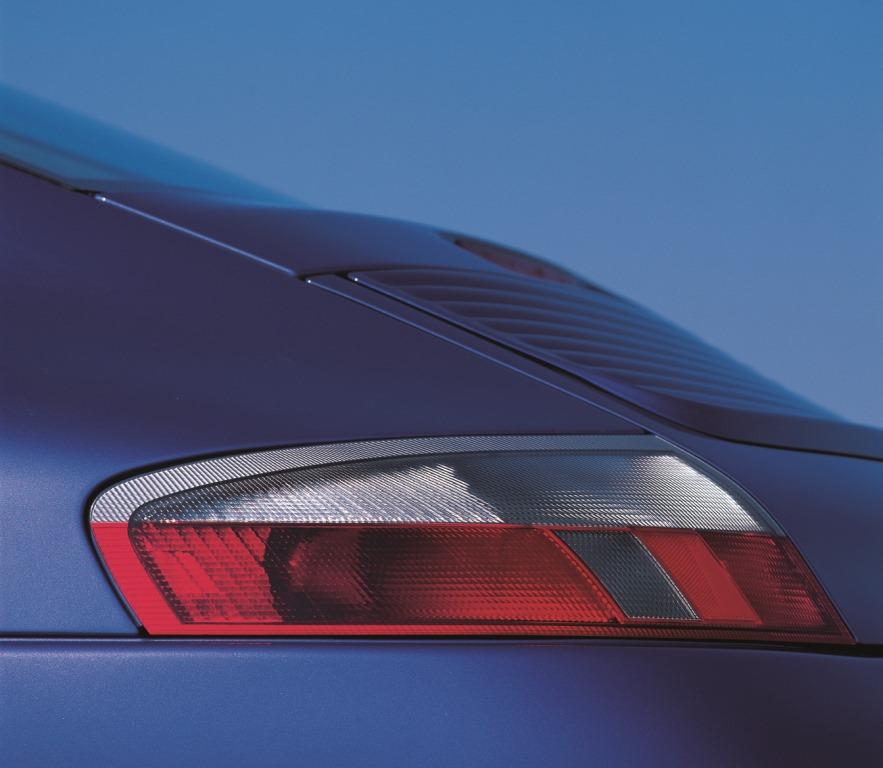
The most striking feature of the Porsche 911 of the model year 1999 is a changed graphic of the light units. The indicator inserts in the headlights and side indicators are white and in the taillights white-gray instead of orange.
The pioneering Porsche Side Impact Protection System (POSIP) consists of two side airbags that are housed in the doors and additional door panels, which are designed to absorb energy. The two air bags have a large volume of 30 liters and are therefore effective over the entire seat adjustment range. POSIP improves the protection of the head, chest, arms and pelvis.
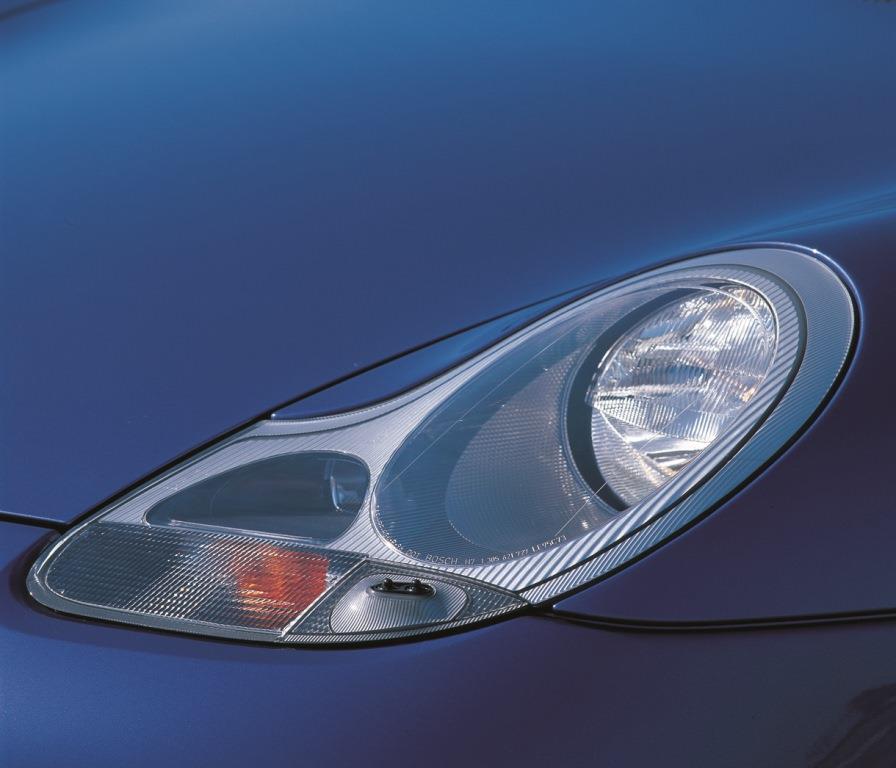
The 911 Coupé can now be delivered with Litronic headlights on request. Gas discharge lamps illuminate the lane brighter and more intensely and improve safety when driving at night. Another contribution to safety is the dynamic headlight range control, which not only takes into account the load status of the vehicle, but also changes in inclination of the body caused by driving dynamics. The high beam halogen lamp (H7) is surrounded by a particularly effective free-space reflector. When the headlights are dimmed, the Litronic low beam remains in operation, but its beam is raised by the headlight range control to improve the area lighting. The Litronic scope of delivery includes a headlight cleaning system.
The elements combined in the previous sports package can now be ordered individually. Sports seats with reinforced lateral guidance, sports suspension with tighter and shorter springs, harder shock absorbers and stronger stabilizers as well as 18-inch turbo-look wheels with tire sizes 225/40 ZR 18 and 265/35 ZR 18 are available separately.
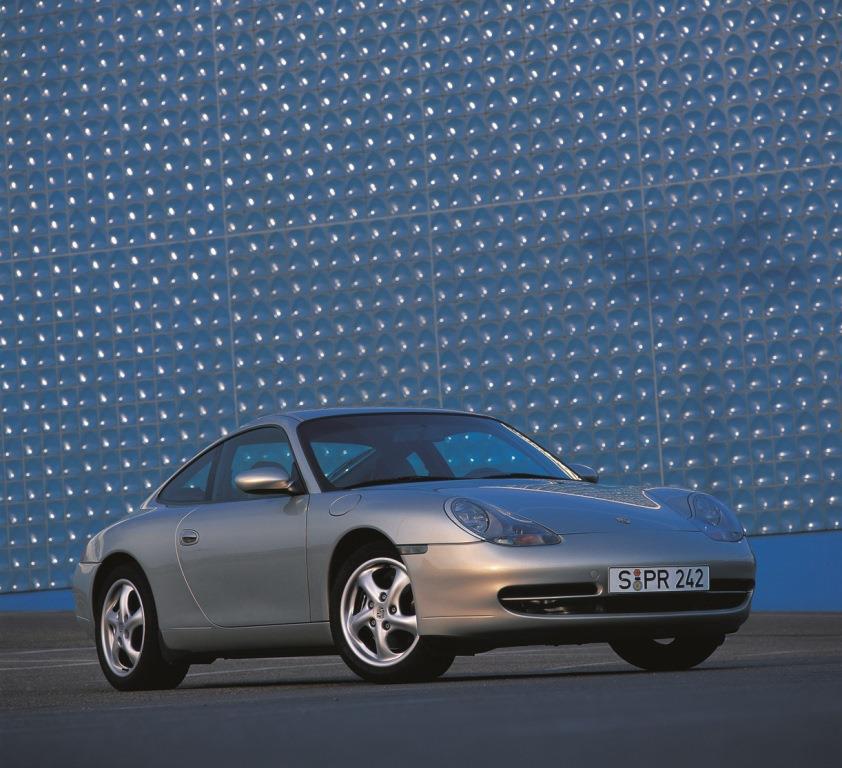
The Porsche 911 Carrera continues the typical Porsche design for 50 years in a modern form, the form preserves the classic emotional characteristics.
Good cylinder filling through four-valve technology and stable thermal conditions through water cooling make the boxer engine effective. With a displacement of 3.4 liters, the output is 300 hp (221 kW). The concept of the boxer engine offers decisive advantages for the construction of sports cars. Its mass balance is perfect, its dimensions are compact, and the short and stiff crankshaft allows high speeds.
The drag coefficient of the body of the current 911 is Cw = 0.30, well below the old value of Cw = 0.34. The product of the drag coefficient and the frontal area, which has become slightly larger, is also cheaper than its predecessor at 0.58 m2. What particularly distinguishes the new 911 are the low lift values. The lift factor on the front axle is 30.08; on the rear axle, supported by the CAV extendable spoiler, this value even reaches CAH = 0.05.
The 911 Carrera is significantly more spacious than its predecessor. The driver and front passenger enjoy more leg and elbow room. The storage space behind the rear seats offers up to 200 liters of storage space in the Coupé.
The proverbial stability of a Porsche body could be further increased through a structural design as well as the use of high-quality sheet metal that is precisely adapted to the loads. The torsional rigidity of the body is well above the average of comparable sports cars. The strength reserves not only reinforce the impression of quality, they also improve driving behavior. Of course, the more stable construction has a positive effect in the event of a crash. The 911 has an extremely robust passenger cell that sets standards.
The defined deformability of the sheet steel body ensures that the occupants are kept under low stress in the event of an accident. Full-size airbags for the driver and front passenger are just as standard as particularly large and effective side airbags. The consistent pursuit of passive safety, which was part of the entire development of the 911 Carrera, and the results of numerous crash tests confirm the conviction of Porsche engineers that they have created what is probably the safest high-performance sports car in the world.
All essential chassis parts and the two axle carriers integrated into the body are made of light metal.
After positive experiences in racing, Porsche also relies on four-piston monobloc brake calipers made of light metal for the 911. Special advantage: Minimal fading even under extreme loads.
The elastokinematic toe-in correction on the front and rear axles is even more perfect in the current 911 thanks to improved axle geometry. The self-steering behavior is largely neutral towards the grip limit and offers lane-stabilizing safety when cornering.
Five levels with a tight, sporty gap enable the engine power to be used perfectly. This results in advantages both in automatic mode and in manual switching mode, which is carried out exclusively using the buttons on the steering wheel.
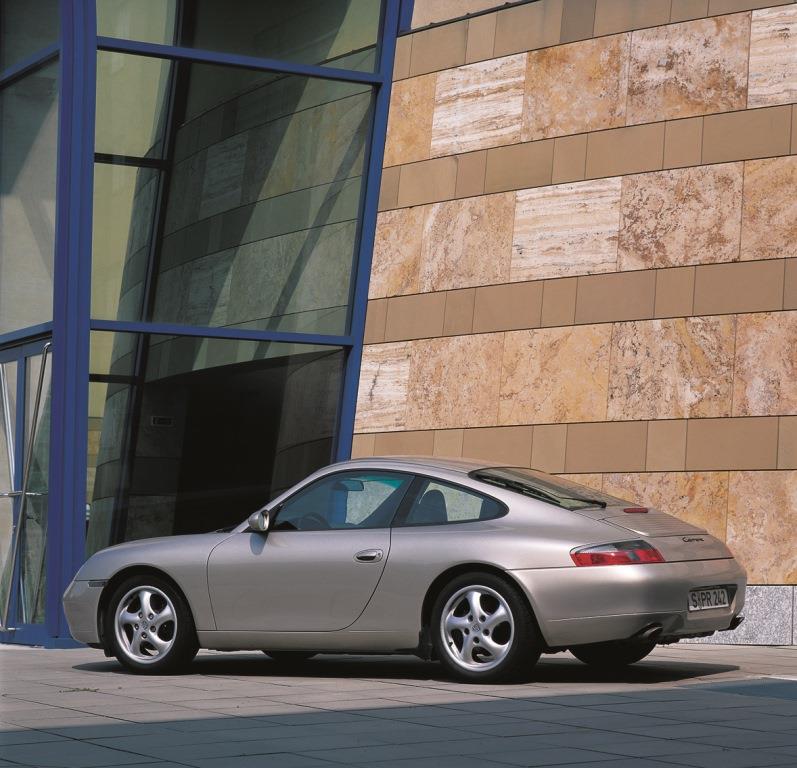
The engineers and designers at the Porsche Research and Development Center in Weissach followed the conviction to further develop the Porsche 911 in the classic line for the 21st century. Customers all over the world have clearly agreed to this decision. The demand for the Porsche 911 has never been so great. The Cabriolet and the Carrera 4, which expand the model family, continue to increase its popularity.
The design of the 911 takes up the design language of the classic in all essential features. The stylistic devices are subtle and elegant. The fenders are no longer so prominent. The width required by the chassis and tires of a modern high-performance sports car has been harmoniously incorporated into the body. When redesigning the classic silhouette, the designers also found a starting point for further improvement: the transition from the windshield to the roof is much smoother today. Since the current 911 basically stays on the traditional line of the most successful Porsche, its recognition value, as practice shows, is extraordinarily high.
Streamlined and smoothed across the board, the 911 has good aerodynamics. The drag coefficient decreased from 0.34 to 0.30 compared to the previous model. Although the body has become wider and the frontal area larger, the overall aerodynamic drag is lower than that of the competition. The lift on the front and rear axles has exemplary low values. This is very beneficial for driving safety at high speeds.
The body is spacious in the essential places. The passengers enjoy more elbow room and an overall feeling of spaciousness. The front trunk has a volume of 130 liters, the storage space behind the rear seats has gained 65 liters of additional storage space. With the seats folded down, the load volume is around 200 liters.
By designing the load-bearing structures and using special, high-strength types of sheet metal, the technicians have raised the bar for solidity even higher for the 911 body. Torsional and bending stiffness are around 50 percent better. The deformability of the body in the event of an accident is more effective. Crash tests at Porsche have shown that the stress on the occupants remains low even in severe collisions.
A new chapter in engine construction has begun at Porsche with the water-cooled six-cylinder boxer engines. The 3.4 liter engine develops 300 hp (221 kW) at 6,800 rpm and the maximum torque is 350 Newton meters at 4,600 rpm. The consumption values and pollutant emissions in the exhaust gas are exemplary. The measured values are well below the Euro norm. The noise level is also below future limits, but the Porsche sound remains unmistakable. And what the customer is particularly happy about: The working time for maintenance work is 60 percent shorter than before, and costs are reduced accordingly.
Six-speed manual transmission and five-speed automatic are designed for the performance characteristics and high torque of the water-cooled boxer engine. The six-speed gearbox is compact and light. The Tiptronic S has five levels.
The 911 Tiptronic S is easy to use. In automatic mode there are only the positions "P, R, N, D" for the selector lever. If the lever is moved from the right automatic lane to the left into its position for manual shifting, the level is selected using the touch buttons on the steering wheel.
The automatic gearshift characteristics are based on the driver's performance requirements and select the most suitable program for the respective driving situation from the five programs stored in the control unit. When the accelerator is quickly released and when braking, for example, the automatic system recognizes the driver's intention to decelerate and consequently does not shift up, but down. The torque converter lock-up is now regulated from second gear onwards according to a program that takes the driving profile into account.
The chassis enables effortless vehicle control. The rack and pinion steering is in a position in front of the front axle that is advantageous for the steering geometry. The front wheel suspension - based on the McPherson system - has elastically connected transverse struts and trailing arms. This allows an elastokinematic toe-in control to stabilize the self-steering behavior in the cornering area. The rear wheels, which are guided by five links, also change their toe-in values when cornering and guarantee slightly understeering behavior at the limit. All wheel guide parts and their support elements are made of light metal.
Another goal of the fine work on the chassis was to improve the suspension and ride comfort. The success of these measures is clearly and pleasantly noticeable with the normal chassis set-up. More than ever, the 911 is a Grand Tourisme with excellent long-distance capabilities. As an alternative, Porsche offers a sports set-up that meets the requirements of particularly ambitious drivers.
To improve stability, the brake system was given the four-piston monobloc brake calipers made of light metal, which were tried and tested in the Le Mans 24-hour race. It guarantees maximum delay and minimum fading. .
Standard equipment includes aluminum wheels with 17 inch rims. 18 inch rims are available as additional equipment or as part of the sports package.
The management of the water-cooled six-cylinder is entirely the responsibility of the Digital Motor Electronics (DME). The ignition voltage is sent directly to the spark plugs from six individual ignition coils. The mixture is prepared by an electronically controlled injection system that supplies each individual cylinder sequentially in the intake stroke
Carrera Coupé ABS is also computer-aided. The optionally available Automatic Brake Differential (ABD) works with the same information. The ABD is combined with a traction control, which, if necessary, also reduces the power of the engine.
The increasing integration of electronic components finds a new logical high point in Porsche Communication Management (PCM). The device equipped with a screen in the middle of the dashboard combines the following functions:
.jpg)
.jpg)
.jpg)
.jpg)
.jpg)
.jpg)
.jpg)
.jpg)
.jpg)
1998 - Porsche 911 (996) Carrera Coupé
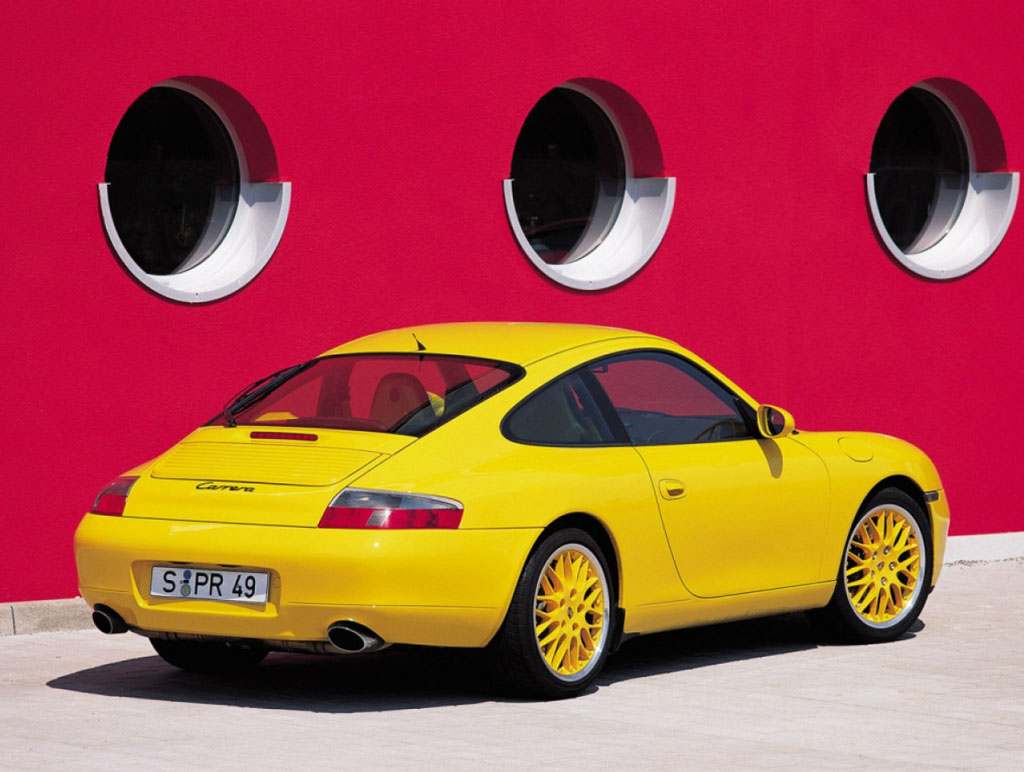
2000 - Porsche 911 (996) Carrera Coupé

Porsche Press kit

Porsche Literature

Our Porsche Cars